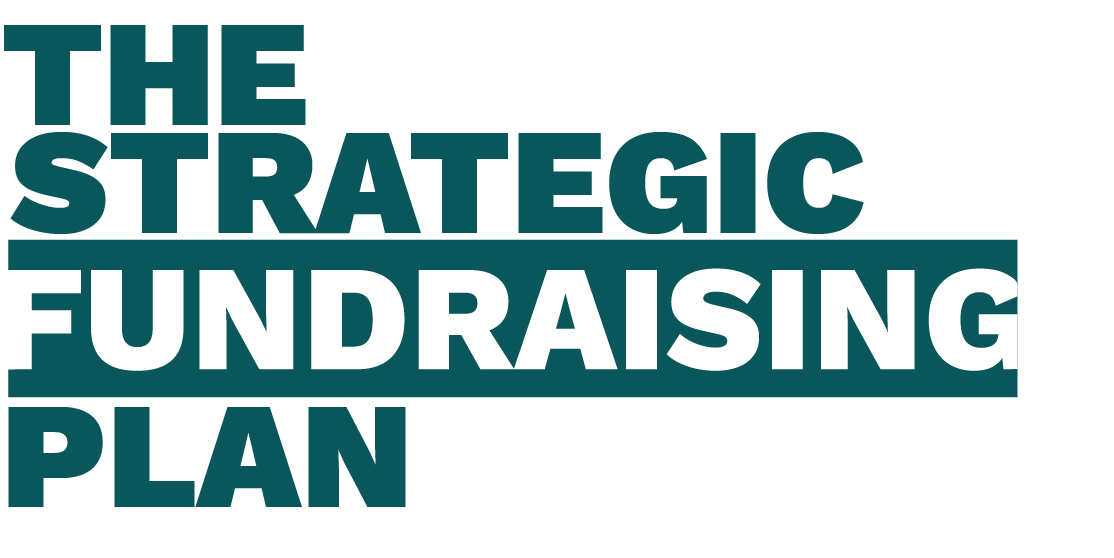Three months into my first role at a national nonprofit, I opened up our donor relationship management software and looked at a list of people who had stopped giving in my area. One of the names stuck out. When I Googled the name I had to refresh the page because I couldn’t believe what I was seeing. The person who had stopped giving to our organization four years prior was the CEO of a 5.7 billion dollar corporation. As a 24-year-old part-time fundraiser, I was confronted with a crisis of belief. Just a few months before that Google search, I had found myself schlepping shovels across town in the carpeted hatchback of my 2-door gray Scion to do landscaping side work that barely covered my rent. Impostor syndrome set in as I squinted at the Google results, and my mind pulled me again and again toward my default thinking.
“Why would this CEO want to hear from you?”
“There’s got to be a big reason why they stopped giving four years ago”
“Are you really going to drive to another state for this?
“There’s not even a phone number on the record.”
“They didn’t invite you to come.”
“What if you say the wrong thing?”
“What if you don’t know what to say?”
“What will your boss say if you strike out?”
Here’s what we’re exploring in this essay:
Beliefs trigger the power to do.
That summer, I listened to the CEO’s publicly available employee update, wrote down three key themes from the talk and thought hard about what would make sense as a reactivation strategy. I looked up the name of the assistant to the CEO and made plans to visit the international headquarters. I purchased a book on one of the themes that also matched our organization’s ministry approach and wrote a handwritten note inviting the CEO to join our president for a podcast interview to share their three themes with our ministry audience. I walked into the international headquarters, and before I made it through the second set of automatic doors, I was stopped by security.
“Sir, do you have an appointment?”
Of course, I didn’t. The security guard agreed to give the card and book to the CEO’s assistant, and within a week I got an email back. The podcast was scheduled, and the relationship between the ministry president and this specific CEO has resulted in gifts 850% larger than before. The point of writing out this story is not the money, nor is it the successful result. The specifics will change from organization to organization, but our responsibility as fundraising professionals is to interrupt our default patterns and manage our beliefs. Why? Because advocating for a worthy mission requires courage.
As a leader, your beliefs start internally through mental repetition, are validated externally in the sphere of action, and affect your organization as you set culture. We will explore these each in turn.
First, you can choose which beliefs to reinforce. What’s more, beliefs get stronger the more you use them.
Imagine for a moment that you have two tabs with next-generation ChatGPT open in your browser. Both of these state-of-the-art AI assistants are there to help you produce thoughts faster than you could on your own. One of the tabs we will call the Victory Tab, and the other we will call the Vanquish Tab. The Victory Tab is in charge of producing past wins, positive thoughts and reminders that you have got what it takes faster than you can finish typing in the prompt.
The Vanquish Tab expertly undermines your confidence, reminds you of the times in which you chose the lesser path, and stokes your anxiety. Both of these AI assistants are perfectly obedient. They will always deliver what they are asked. The more times you interact with each assistant, the more attuned they become to your personal preferences. In fact, when you repeatedly use the Victory Tab or the Vanquish Tab the one that is unused starts to produce responses that you doubt. The only wise thing to do is to close the Vanquish Tab. You don’t need it. Why would you choose to build a museum of mental horror that gets stronger every time you visit it?
Additionally, beliefs flow in patterns, this pattern is often known as your worldview.
Here’s an example of the pattern of beliefs that make up my worldview as a person of faith in Jesus Christ. I believe there is absolute, unchanging truth demonstrated in the person of Jesus Christ and the texts that tell his story. The beliefs that are found when you read the Bible rehearse your identity as a deeply valuable image bearer of the Creator (Genesis 1:28). He formed you and breathed into you the breath of life (Genesis 2:7). You are given worth and a purpose (Exodus 19:5-6, 1 Peter 2:9). Your existence is not an accident, and you are deeply loved before any action on your part (Romans 5:8, Ephesians 2:4-5). This has nothing to do with how much you’ve accomplished, nothing to do with your skin color, nothing to do with your history, your shame, or the choices that you’ve made (Romans 8:37-39). You are loved by your Heavenly Father, no matter what. Accepting the free gift of salvation through Christ’s sacrifice is opening the ultimate Victory Tab. Living in the light of these beliefs allows us to function freely since.
The instruction to intentionally manage one’s beliefs is not a new one. As the Apostle Paul writes in Romans 12:2, “Do not be conformed to the pattern of this world, but be transformed by the renewing of your mind.”
Here are a number of intentional statements to adapt into your leadership and fundraising belief mindset. This is part of your Victory Tab. Unfortunately, the Victory Tab AI doesn’t exist (yet), but I challenge you to identify your top 3 Victory Tab beliefs, write them on a 3” by 5” notecard, and practice them out loud for 30 days, bonus points to do them to yourself in the mirror and smile while you do so. You can use the following list as a starting point, or choose your own Victory Tab beliefs.
- I’m going to leave this interaction with a story, or a friend, or both.
- The size of the gift does not determine the size of my worth.
- I am offering people a worthy mission to be a part of.
- There are people waiting to join in this mission.
- I am a steward of what we’ve been given.
- This is just one call out of a thousand.
- Yes lives in the land of No.
- There is abundance available.
- Perseverance is my superpower.
- I am seen. I am known. I am loved.
- The mission is not all about me.
- Giving is a gift to the giver.
- Generosity is powerful.
- I have influence.
Check your attitude as you repeat these intentional beliefs. This is not merely choosing something that is untrue and convincing yourself otherwise. Repeating untrue statements until they seem true is known as the “Illusory Truth” effect, and is used by propagandists and manipulators. This intentional belief technique utilizes mental priming and bodily activation through seeing yourself repeat the statements with positive emotion. What is crucial to remember as you feel hesitant to say them out loud, is that these are true statements, but that you have just not yet incorporated them into your default assumptions.
After 30 days, how are your beliefs translating into the sphere of action? That’s the second topic we will explore.
Even as I was editing this essay, I experienced a block of negative thinking and hesitation. Default thinking and Vanquish Tab thoughts started popping up as I wrestled with how to structure this message. I recalled a line from one of my personal top five books. “Hope is a start. But hope needs action to win victories.”
One of the top books I’ve read as an adult is “The Magic of Thinking Big” by Dr David J Schwartz. Every year since I was eighteen, I’ve re-read this book that was first published in 1959.
One of the key messages that I’ve held onto from this book is the core phrase, “Action cures fear.” I repeat this phrase every time I hesitate to make supporter calls as a fundraising professional. Like we explored earlier, belief triggers the power to do. Yet fear crouches nearby.
Dr Schwartz recommends this when facing fear. “Isolate your fear and then take constructive action. Inaction – doing nothing about a situation – strengthens fear and destroys confidence.”
It is important to note here that not all situations can be responded to with physical action. Viktor Frankl was an Austrian psychiatrist who lost his family to the horrors of the Auschwitz concentration camp. Amidst the death and brutality that he faced every day, his theory of logotherapy crystalized in his mind. Specific to this point, the logotherapy concept of “Freedom of Will” states that “humans are free to decide and can take a stance toward both internal and external conditions.” Frankl was robbed of the capacity to act independently in his extreme situation, but he chose to take positive mental action amidst the situation he found himself in during World War II.
There will always be challenges and limits, and we will explore how to embrace your limits for greater creativity in the next essay, but the mental space in which you inhabit is yours to cultivate.
Finally, the beliefs you choose have a massive impact on the culture of your organization.
Here is what I mean. Let me take you back to 1:21pm on June 20, 1997 when Captain Michael Abrashoff became skipper and stepped aboard the USS Benfold in San Diego California. He was shocked by what he saw.
The USS Benfold and its crew was in shambles. They had the highest turnover rate in the Navy. They boasted the lowest morale among the destroyer class. To top it off, sexual and racial prejudice seethed among the sailors under Abrashoff’s command.
“This is the best damn ship in the navy,” declared Abrashoff. An aspirational statement at best, a hopeless delusion at worst.
Every day for his twenty months as Commanding Officer, Abrashoff showed up with undeterred confidence and focus, repeating his mantra to the beleaguered crew. His beliefs preceded his own actions, not to mention the ship’s culture.
Yet culture, according to Abrashoff, “is the ultimate competitive weapon for any organization.”
Captain Abrashoff repeated his mantra every day during his 20 months as Commanding Officer of the USS Benfold. Abrashoff intentionally chose several core beliefs. He believed that there was always a better way to do things, and that the crew, not the captain, were most likely to have insights into what those things were. He believed that the secret to lasting change is to implement processes that people will enjoy carrying out. As he states on page 31 of his book, “my job was to create the climate that enabled people to unleash their potential. Given the right environment, there are few limits to what people can achieve.”
The crew of the USS Benfold rose to the challenge and environment set by Abrashoff’s managed beliefs. Within months, other navy captains were being sent to the ship to find out how to run their ships like the Benfold. They started operating on 75% of their budget, saving the United States taxpayers millions of dollars. They skyrocketed their reenlistment rate from 28% to 100%. Their promotion rate became twice that of the navy average. They achieved the highest gunnery score of the Pacific fleet. Then they beat their own score to become the highest scoring ship in the entire navy. They set a new record for preparing the ship between deployments, shaving off 39 days of work from a 52 day process. Within seven months, they had earned the Spokane Trophy, the award given to the most “combat-ready” ship in the Pacific Fleet.
Before leading, manage your beliefs. Beliefs trigger the power to do. When you are intentional in your beliefs and actions, the organizations you are called upon to lead start to flourish.
Recommended resources mentioned in this essay:
- The Magic of Thinking Big by David J Schwartz PhD
- Man’s Search for Meaning by Viktor Frankl
- It’s Your Ship: Management Techniques from the Best Damn Ship in the Navy by Captian D. Michael Abrashoff
- Holy Bible, NIV version
Bonus recommendations:
- The Slight Edge by Jeff Olsen
- Atomic Habits by James Clear
- How to Fail at Everything and Still Win Big by Scott Adams



